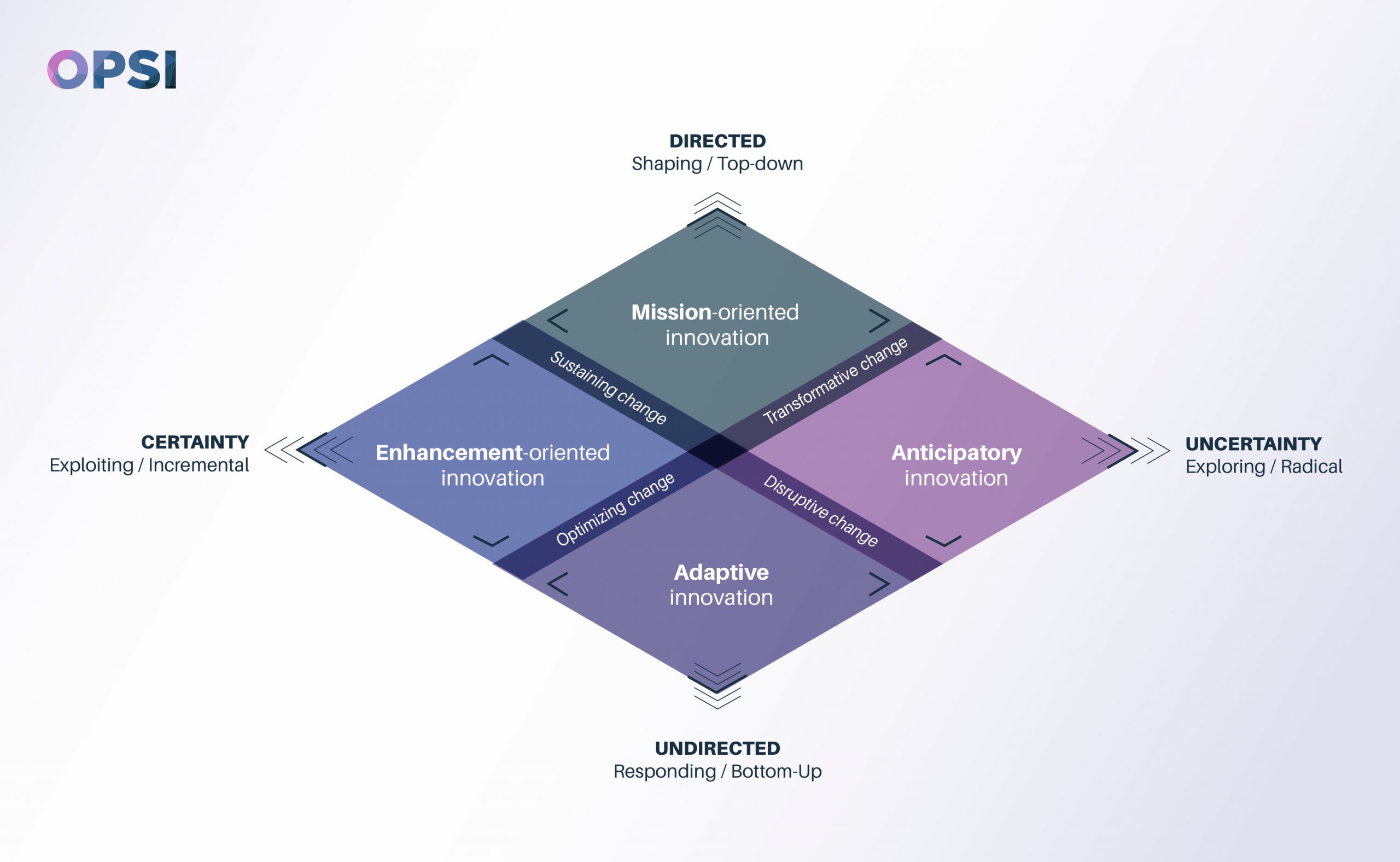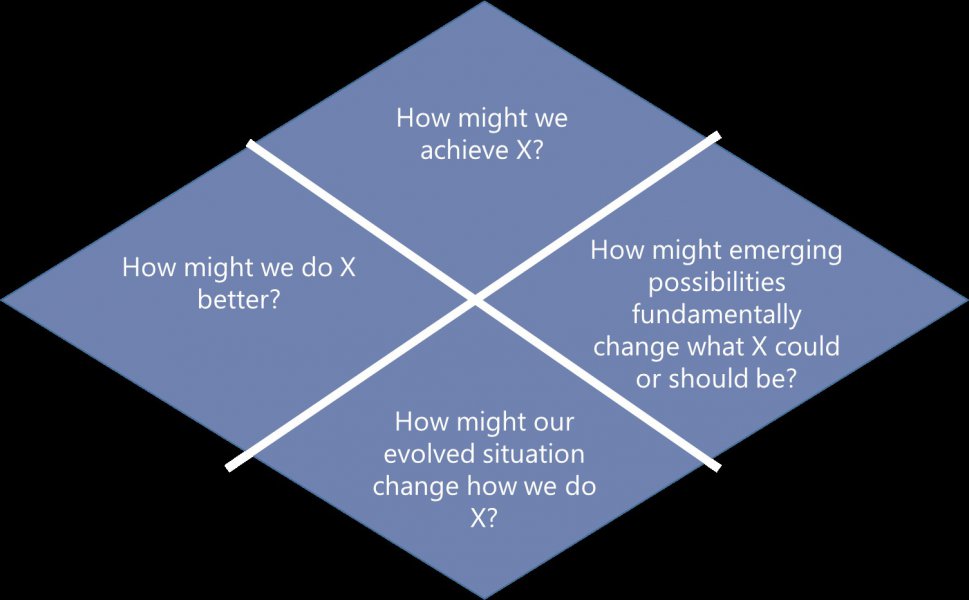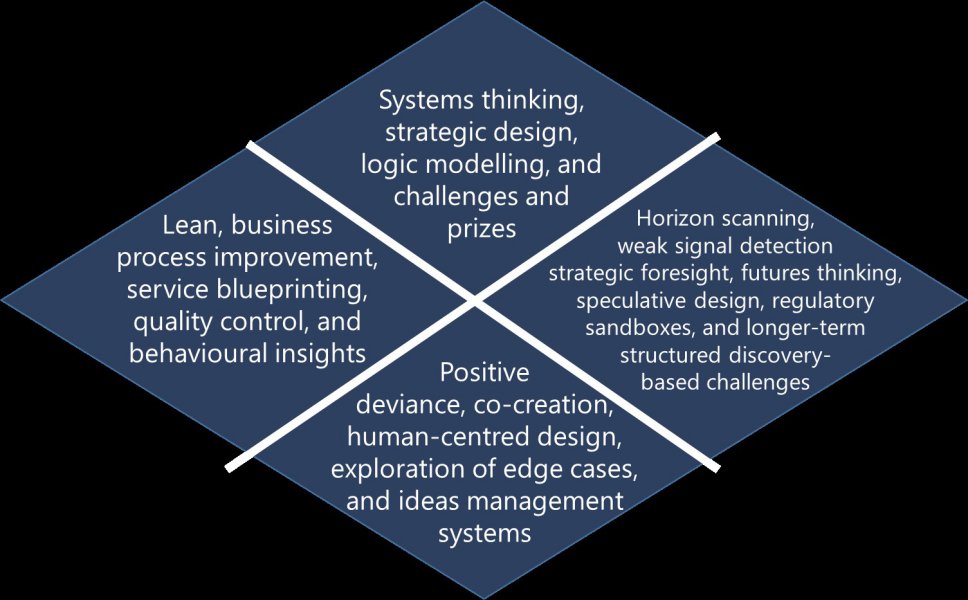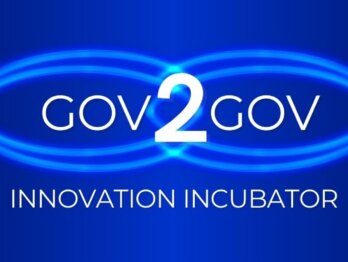Innovation facets: different tools for different aims

Abraham Maslow once wrote, “I suppose it is tempting, if the only tool you have is a hammer, to treat everything as if it were a nail.”[1] This snappy quote captures the insight that our behaviour tends to be shaped by the tools we have at hand, and the tools we have at hand shape how we see the world and what is possible. In this post, I would like to explore our emerging thinking at OPSI about how this plays out when it comes to innovation and the different methods and tools that we use to enable or achieve innovative outcomes.
Different innovation facets lend themselves to different aims
As we have discussed before, OPSI views innovation as multifaceted, with four distinct facets reflecting the different aims and emphases that innovation can have:
- Enhancement-oriented innovation – Enhancement-oriented innovation often starts with the question of “How might we do X better?” It is not about questioning what is being done, but rather how it is done and whether it can be done differently, and hopefully better. An example is the use of behavioural insights to improve the response or compliance rates for matters such as on-time payments.
- Mission-oriented innovation – Mission-oriented innovation is about asking “How might we achieve X?”, with X ranging from the world-changing (going to the moon) to the significant but relatively contained (ensuring better services). It starts with a driving ambition to achieve an articulated goal, though the specifics of how it might be done are still unclear or are not set in stone. An example of such innovation is the mission of going to the moon.
- Adaptive innovation – Adaptive innovation starts with the question “How might our evolved situation change how we do X?” Adaptive innovation is essentially about a realisation that things are happening that don’t fit with what is expected. An example of such innovation is how many government organisations have engaged with social media that initially started with bottom-up initiatives, and changed some of how they interact with citizens.
- Anticipatory innovation – Anticipatory innovation starts with the question of “How might emerging possibilities fundamentally change what X could or should be?”, with X being the relevant government response or activity. Anticipatory innovation is essentially about recognising and engaging with significant uncertainty about not only what works, but also what is appropriate or possible. An example of this facet is where a government funds investigative work into artificial intelligence (AI) and its impact on service delivery.
We can see then that each facet lends itself to particular types of thinking and different forms of innovation.

Differing tools and methods lend themselves to different innovation facets
For each of the facets, it is interesting to consider how they relate to the differing tools and methods that can support innovation. Differing tools are naturally intended to do or achieve differing things: a hammer helps us put in a nail; human centred design helps us understand what people need and want.
So, if we take the example of behavioural insights, it is an approach intended to ensure that interventions are based on an understanding of how people actually make decisions and act. It is about ensuring that policies are more effective, that they achieve what they actually intended to. It encourages experimentation to see what works. In this way, behavioural insights can help introduce new and impactful interventions (innovations). This innovation is likely inclined towards building on, or enhancing, existing functions and processes. It might demonstrate that something is not working, but it is not used to fundamentally question what it is that is trying to be achieved.
Another example is that of ideas management systems – systems to help collect, consider, and prioritise new ideas. Such systems can be very useful in surfacing new insights and ideas from staff, stakeholders or partners. Such ideas are generally based on people’s observations about what is working, what is not, or things that they have seen elsewhere. Such ideas tend to lean towards more adaptive innovation.
The following image illustrates where we think differing tools and methods are most likely to lean towards activity that supports the differing facets.
This is not definitive, and it is something that we are iterating as we discuss the model further and think more deeply about the relationship of the different facets to different tools and methods.

While tools can constrain our thinking, never say never
None of this is to say that a particular tool aligned with a particular facet cannot be used to support activity in any of the other innovation facets. It may well be possible to use speculative design to help enhance existing practices, or to use human centred design to drive a mission. The more sophisticated one’s use of a tool, the more one has mastery of a method, the more likely that one can overcome the predispositions of the practices that you are using. Equally, it may be possible to use tools in conjunction with each other, to balance the biases of different tools.
However, we suggest that in most cases, particularly where you or the people you are working with are not adepts in a tool or method, the tools you use will push you in certain directions. Of course there is nothing wrong with this – we are simply advocating that it is useful to be aware of the directions that specific tools are likely to push us towards, and to consider whether the tools we have available align with what we are trying to achieve.
We think that the innovation facets model can help us be more aware of the biases of our tools and methods. It can help us better think about our existing capabilities and whether they align with what we need. It can also help us think about our broader ecosystem, and who else might have capabilities that balance or complement our own.
We’re still learning, let us know what you think
This thinking is based on our team’s experiences, and what we have witnessed in different settings. That said, this is still a work in progress. We will be testing our thinking with practitioners in different countries, but we would also like to hear from others if this fits with their experiences. If you have any feedback, we welcome your comments, or you may wish to share your thoughts with us by email or on Twitter.












